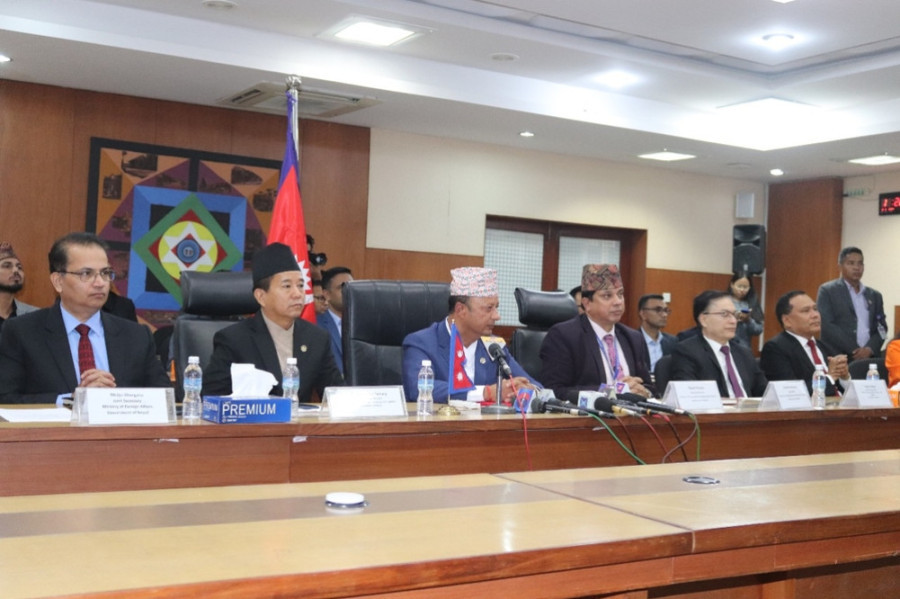Editorial
A promising start
The export of 40MW of electricity to Bangladesh could herald a sea-change in power trade.
Nepal’s hydroelectric potential is huge, with an estimated capacity of 40,000 megawatts. Nonetheless, the country has been unable to realise even a fraction of its potential due to limited market access and an unfavourable political climate. As a result, currently, the country generates just around 3,000 megawatts. The recent power trade with Bangladesh through India’s grid, however, could mark a turning point. Under the deal, yearly, 40 MW of electricity will be exported to Bangladesh for five years, from June 15 to November 15. This follows a tripartite agreement between the NTPC Vidyut Vyapar Nigam, the Nepal Electricity Authority and the Bangladesh Power Development Board on October 3, 2024. The export, initially envisioned in 2018, was finally inaugurated on Friday.
The agreement offers several advantages to all the countries and stakeholders involved. First, it strengthens regional cooperation and boosts economic development of these countries. Second, it promotes green energy in Bangladesh by reducing its reliance on fossil fuels. A 2022-23 government report of Bangladesh reveals that the country relies mostly on natural gas to meet its energy demand, and hydroelectricity accounts for only 1 percent of the total energy generation—24,911 MW. Nepal will also greatly benefit from this trade as it offers a chance to cut its trade deficit, which stands at Rs1.44 trillion; the agreement is expected to generate Rs330 million annually. Further, as Nepal will transmit the energy to India through the 400KV Dhalkebar-Muzaffarpur cross-border transmission line, the southern neighbour can also benefit from it.
This agreement highlights the positive outcomes of nations working together for shared goals. It remains to be seen how sustainable it is though. Efforts should be made to facilitate uninterrupted electricity transmission, as international market access is crucial, especially for Nepal. While India’s willingness to facilitate power exports to Bangladesh is welcome, Nepal’s sole dependency on its southern neighbour for energy trade also cannot be denied. Without direct territorial links, Nepal’s ability to independently access foreign markets remains constrained. To overcome this, establishing a South Asian energy grid would be a game changer, enabling energy exchanges and opening avenues to harness the vast hydroelectric potential of the Himalayan region. Gaining India’s confidence and support for initiatives that enhance sub-regional productivity is vital in this regard. India therein also has a great opportunity to show that it is indeed a true leader of South Asia.
As crucial as the agreement may seem, this agreement has only set a precedent. Nepal plans to produce 28,500 megawatts by 2035, so it must address a range of technical and regulatory hurdles to ensure both smooth production and cross-border transmission. Equally important is developing infrastructure to maximise the country’s electricity production. Again, concerted efforts from all South Asian countries can help the region increase its renewable energy generation and also boost sub-regional connectivity. The success of the Nepal-Bangladesh electricity export agreement offers a promising starting point for the realisation of these goals. What happens next will depend on the will of the Nepali political class to continuously follow the path of national prosperity.




 8.12°C Kathmandu
8.12°C Kathmandu














